Remembering EDSA – February 25
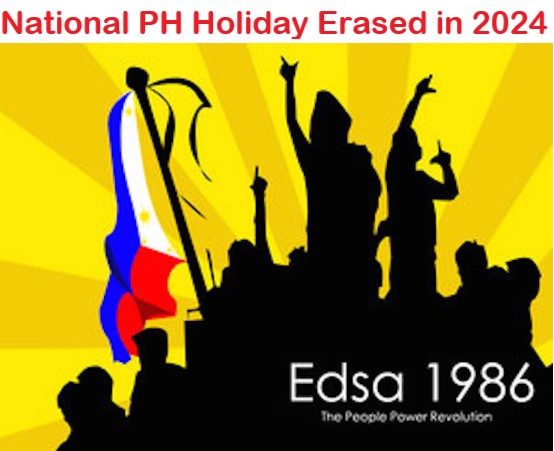
[1] Power to the People – The EDSA Revolution and the start of the Fifth Philippine Republic, February 26, 2016
The February 25th People Power Anniversary is a nationwide annual observance and school holiday in the Philippines. This event still holds a special place in the hearts of many Filipinos who remember a revolution that restored democracy to Philippines in 1986.
A Failing Economy and Crooked National Election were the Last Straws

February 25 falls on a Sunday this year providing a great excuse for the son of the former dictator to drop recognition of this historical event.
We know now EDSA was born out of a failed military coup d’état attempt at a time when Philippines was a political tinderbox. As poorly as the military had treated the people during the time of dictator Ferdinand Marcos, Sr., when The People suddenly galvanized and rose up, scheming generals had to get onto the People Power train or cause a massacre of innocent Filipino people in the impending wreck.
Young Filipinos and Old in the Military Choked when Faced with possibility of Civilian Massacre
Few true revolutions result in meaningful improvement of circumstances for the majority of people impacted. A 2016 book containing commentaries of participants, and others who have lived in the wake of EDSA, considers the status of Philippines 30 years later, asking: What is the true meaning and impact of EDSA? First-person accounts of what happened in Manila over four days of popular uprising, and thoughtful essays considering what has changed since given the hopes and dreams of that time, are in this memorial book.
Some conclude EDSA was a failed effort and nothing has really changed despite the fact this day is (sometimes) celebrated as a demonstration of what People Power meant.
As a visiting teacher this writer regrets any effort to erase or diminish history anywhere–preferring instead to learn from history–and I have written previously about this time in Philippines history.

[2] How President Marcos became a Constitutional Dictator; The Economic Model for Alaska, DONN LISTON, August 3, 2023.
Recently Rappler.com/Newsbreak reported:
The culmination of the bloodless revolt on February 25, 1986, kicked dictator Ferdinand E. Marcos out of Malacañang after an iron-fist rule that lasted more than a decade. His family soon went on exile in Hawaii, an experience that his son Marcos Jr. described as among the darkest days of their lives.
A decades-long project to rehabilitate their family’s image ultimately led to the Marcoses returning to power, capped by Marcos Jr.’s ascent to the presidency in 2022.
Also from the Rappler story: When President Marcos removed the People Power Revolution anniversary from the list of holidays in 2024, ‘a fire was lit under us,’ says the grandson of democracy icons Ninoy and Cory Aquino.
So far, the Buhay ang Edsa campaign network has listed the following events later this month:
- February 23: National Day of Prayer and Action for EDSA
- February 24: Kapihan at Talakayan sa Naging Papel ng August Twenty-One Movement noong People Power Revolution
- February 25: Freedom Ride, Multimedia Assembly, and Concert
Remembering/Rethinking EDSA

As a young Idealist this writer had once become swept up in the anti-Vietnam War fervor of The Moratorium March in downtown Anchorage, ALASKA in 1969—sixteen years before EDSA

[4] We were Born to be Wild! DONN LISTON 10/14/2022
https://donnliston.net/2022/10/born-to-be-wild/
From Remembering/Rethinking EDSA:
People Power
The Philippine Revolution of 1986 introduced the term “people power” to refer to the campaign of persuasion against state violence. Instead of matching the armed forces of the state with their own weapons, as in a civil war, people power is the use of civilians to prevent the charge of the armed forces of the state. Monumentalized in scenes of civilians blocking, holding flowers and rosaries, offering food to soldiers, it was a cry for compassion and an assertion that violence is illegitimate if used against unarmed protestors.
[5] Remembering/Rethinking EDSA, Introduction JPaul S. Manzanilla, P-2
Before the historic four days at Epifanio de los Santos Avenue (EDSA), national democratic activists in the Southern Tagalog region had already formed “Solidarity for People’s Power,” in support of clean and honest elections. In her inaugural speech on 24 February 1986, Cory Aquino traced its provenance to her husband’s assassination: “It took the brutal murder of Ninoy to bring about the unity, the strength, and the phenomenon of People Power…”
Immediately after EDSA, a number of people have commented upon and developed the notion of People Power. It is generally characterized as a peaceful and nonviolent way of achieving the social and political goals they (the people) have long desired”, and “a nonviolent expression by the Filipino people to achieve justice.”

The Crisis that Caused EDSA
Social Rupture
To contemporary observers, the public outrage at the assassination of Benigno “Ninoy” Aquino, Jr. on 21 August 1983 clearly led to the escalation of a popular protest movement that culminated in People Power. From another angle, the four days in February 1986, from the 22 to the 25th, can be understood as the resolution to the rupture in social structure that occurred with Aquino’s assassination, an event that shocked most Filipinos. P44
Ironically, Marcos himself sought to resolve this social rupture a couple of years after Aquino’s assassination by calling for an unprecedented snap presidential election that he set on 7 February 1986. Seeking to pacify the US, Marcos announced the surprise poll in November 1985 during an interview over American television. Marcos had probably thought the same old electoral tricks would work and put his regime on solid legal grounds. P45
Regrettably for Marcos, various political groupings that opposed his regime managed to achieve something unprecedented: coalesce around Corazon Aquino as the opposition’s candidate for president…P45

It is Always Dangerous to Rig an Election and this Effort Backfired
Marcos used technology to create a veneer of objectivity—perhaps the first time ever that computers were used in a Philippine election. As is well known, on 9 February some thirty computer technicians staged a dramatic walk out of the so-called quick count being held at the Philippine International Convention Center (PICC), allegedly to protest the systematic manipulation of the vote. Technology was not on Marcos’s side after all because the walkout was captured live on television. Catholic bishops and the US condemned the fraud. P45
Election Fraud
The NAMFREL tally based on 69 percent of the precincts showed Aquino leading Marcos by 715,045 votes. But on 15 February Marcos’s parliament, the Batasang Pambansa, declared him the president-elect, with 10,807,197 votes to Aquino’s 9,291,716.
The following day, at the Tagumpay ng Bayan rally held at the Rizal Park attended by “over a million” people, Cory Aquino proclaimed the “people’s victory” and launched a civil disobedience campaign, a largely symbolic one, to protest the stealing of the vote. P46
The story of fracture within the military and an organic movement to take back democracy from the dictator is compelling. Withdrawal of USA support for Marcos sealed his fate. Advisor to Marcos US Senator Paul Laxalt of Nevada, when asked if he should stay in the capital and likely die there, told Marcos to “cut and cut cleanly.” Newly elected Pres. Aquino demanded Marcos leave the country, thus ending the possibility that the dictator would be brought to justice. Instead he was removed to Hawaii where he would die in American sanctuary.
What was Learned?
Most scholars agree that while People Power toppled a dictatorship, its revolutionary potential fell far short of people’s hopes and expectations of change, and that the Aquino government was basically “restorationist” and what was “restored” was yet another variant of an “elite democracy” dominated by a predatory oligarchy composed of a small number of families linked to each other by personalistic ties of blood or marriage as well as shared political and economic interests, intent on extracting “booty” (in the form of rents) and other privileges from the state with little interest in formulating coherent economic policies or in redistributive justice. Scholar Paul Hutchcroft would say, despairingly, that “”the more things change, the more they stay the same.”
[10] Hutchcroft, Paul D. “Oligarchs and Cronies in the Philppine State: The Politics of Patrimonial plunder.” World Politics 43: 414-50
In 2022 Filippinos elected the son of Ferdinand Marcos as president. Having been present and experienced great privilege in political drama throughout his life, Marcos Jr. is now two years into his own presidency–after having been elected by the same People Power that had elected and removed his father as president.
One Filipino blogger, benign0, challenges PH hope for the future:
We then get to the question on whether Filipinos were ever capable to begin with. Much is said about how, in the aftermath of World War II, the Philippines was the richest county in the region, second only to Japan. Why then does the Philippines now find itself way behind — way way behind countries like South Korea which was wracked by war into the 1950s and recently overtaken by Vietnam which only found peace well into the 1970s?
[11] On what bases do Filipinos harbour “hope” for 2024?
Given challenges he faces after two years, on this day Pres. Marcos’ Lessons from history Apply more than any other in the year.
References:
[1] Power to the People – The EDSA Revolution and the start of the Fifth Philippine Republic, February 26, 2026
https://justpayroll.ph/power-to-the-people-the-edsa-revolution-and-the-start-of-the-fifth-philippine-republic/
[2] How President Marcos became a Constitutional Dictator; The Economic Model for Alaska
https://donnliston907.substack.com/p/how-president-marcos-became-a-constitutional
[3]EDSA People Power Revolution, Rappler, February 13, 2024
https://www.rappler.com/topic/edsa-people-power-revolution/
[4] We were Born to be Wild! DONN LISTON 10/14/2022
https://donnliston.net/2022/10/born-to-be-wild/
[5] Remembering/Rethinking EDSA, Edited by JPaul S. Manzanilla and Caroline S. Hau, Anvil Publishing Inc., Mandaluyong City, Philippines, 2016 www.anvilpublishing.com
[6] Ibid P-3 Mercado, Monina Allarey, ed, 1986 PEOPLE POWER: An Eyewitness History (The Philippine Revolution of 1986) Mania: The James B. Reuter SJ’ Foundation
[7] Erum, Moody L. 1989. Moral and Religious Elements of People Power and Their Bering on Nation Building. In Alternatives to Violence: Interdisciplinary Perspectives on Filipino People Power, ed. Douglas J. Elwood, 42-49. Quezon City, New Day Publishers.
[8] ESSAY: People Power: Deception and Truth in a History-Changing Event, Filomeno V. Aguilar, Jr. P42
[9] International Observer Delegation. “A path to democratic renewal”: A report on the February 7 1986 presidential election in the Philippines.
http://pdf.usaid.gov/pdf_docs/PNABK494.pdf

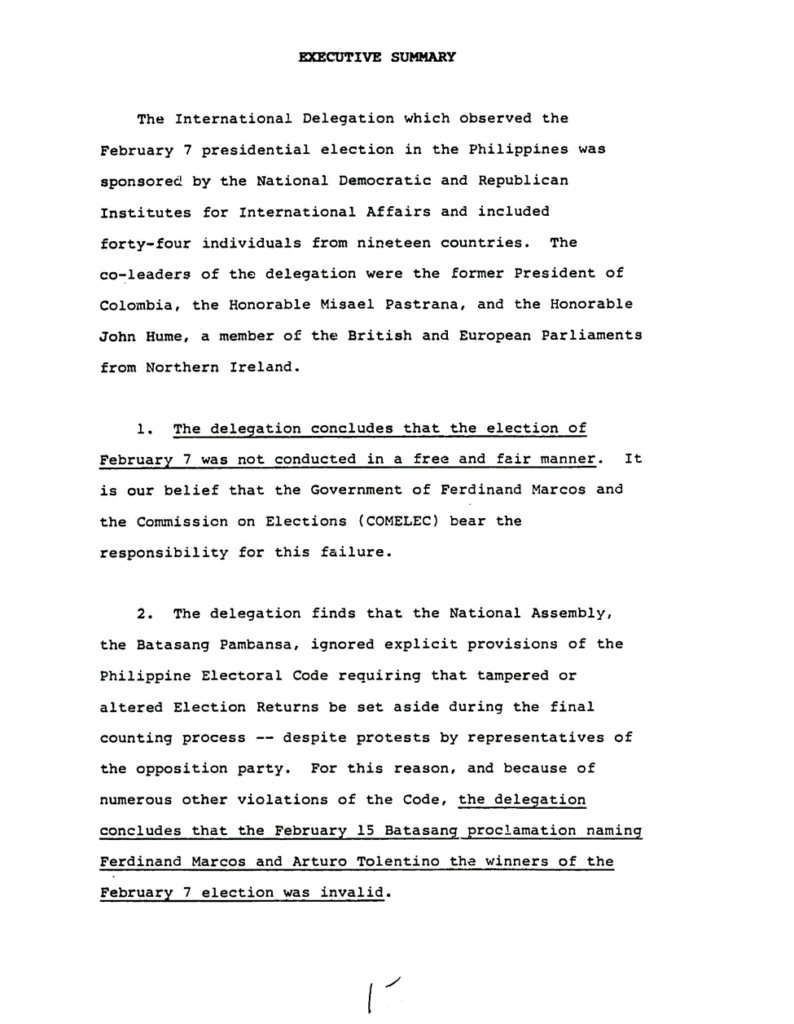
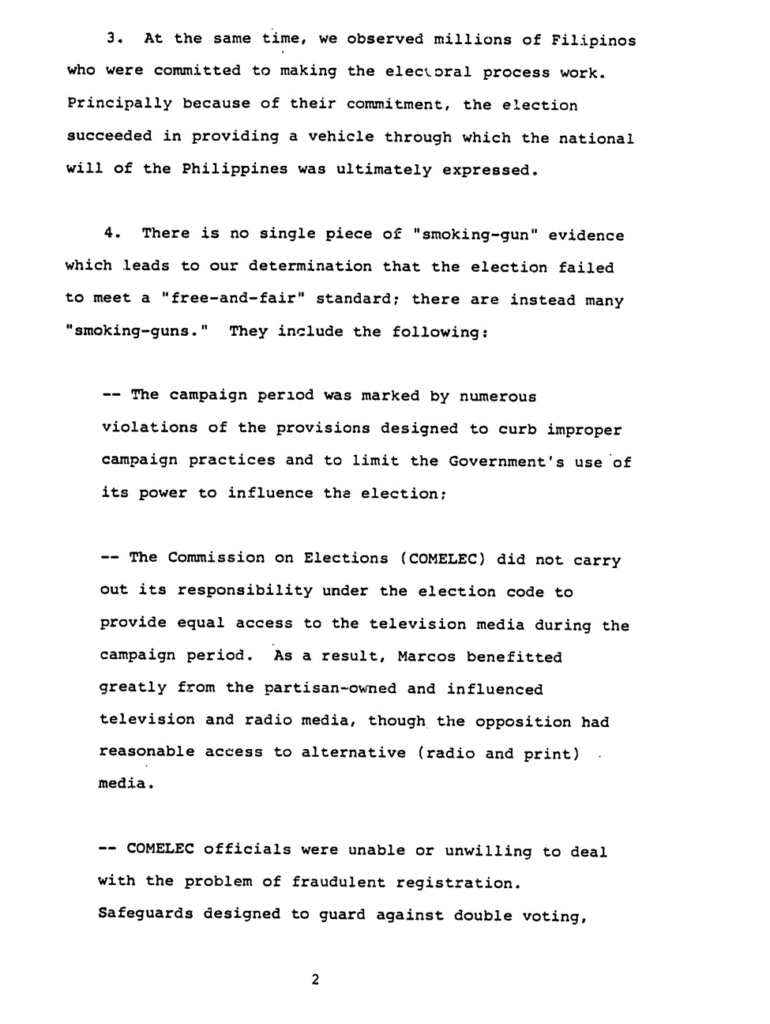
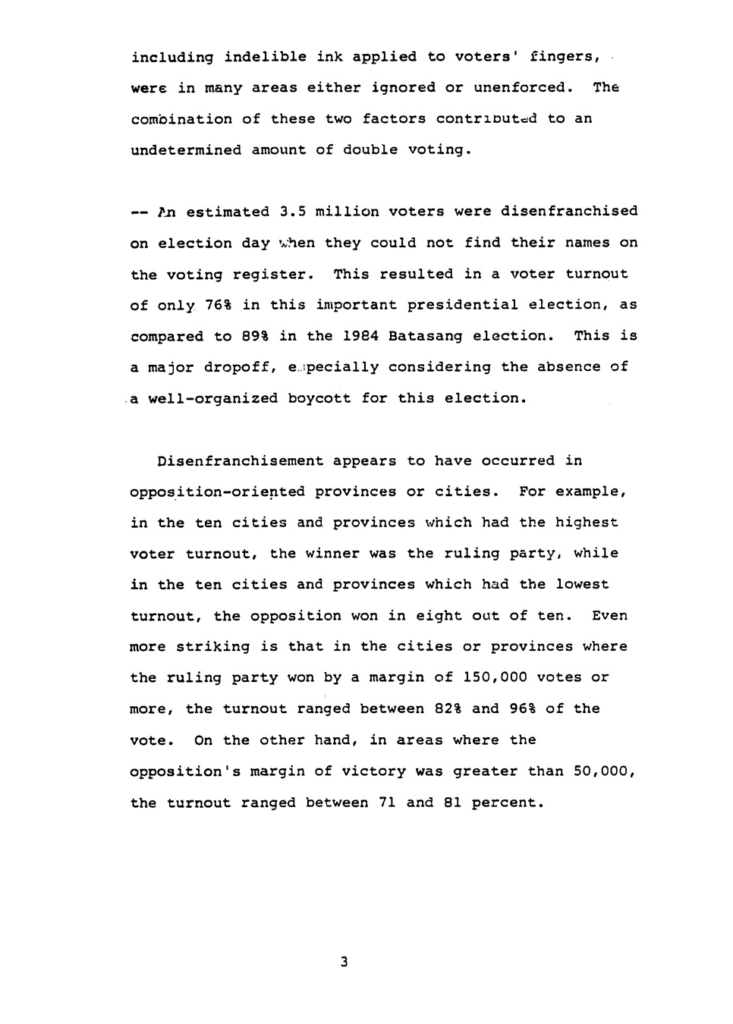
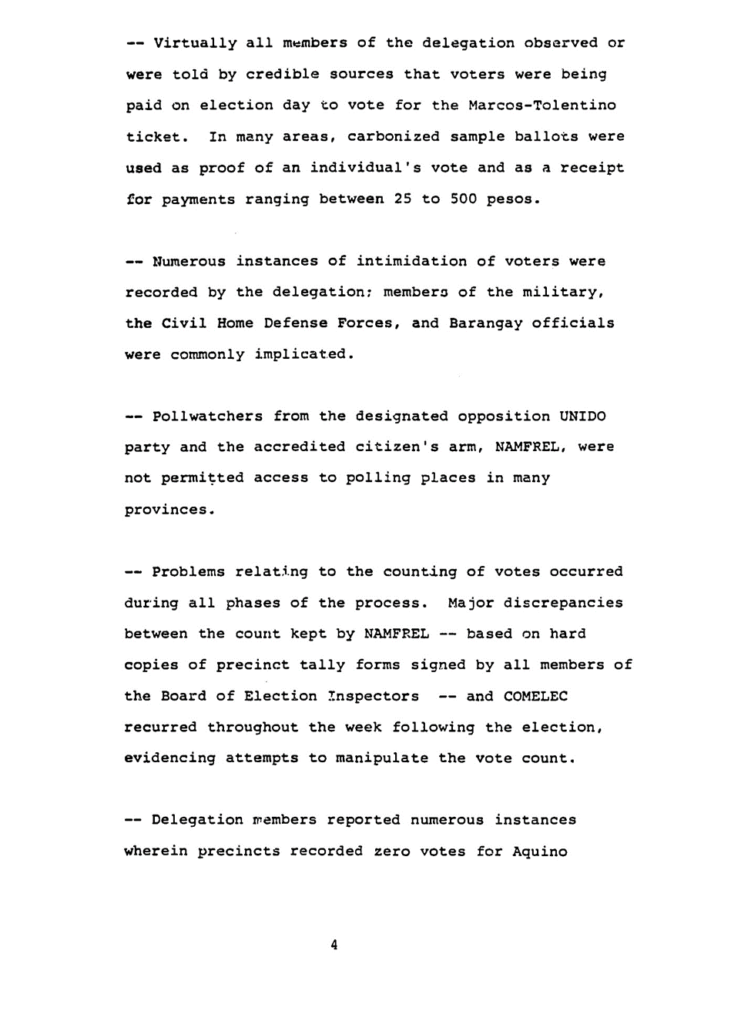
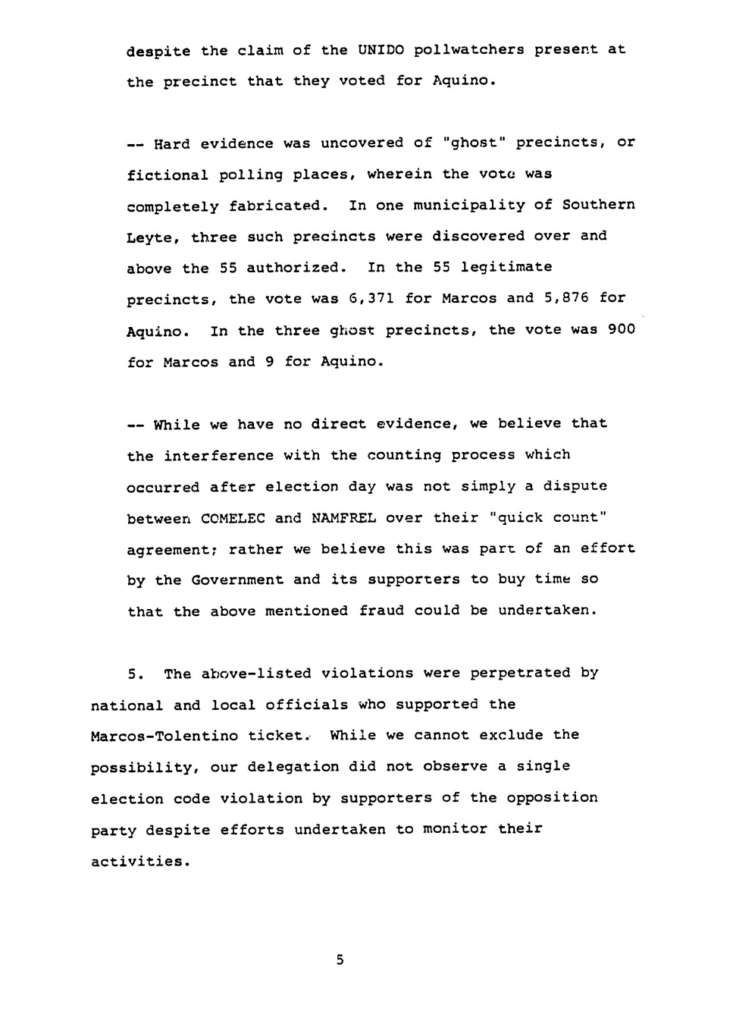
[10] Hutchcroft, Paul D. “Oligarchs and Cronies in the Philppine State: The Politics of Patrimonial plunder.” World Politics 43: 414-50
[11] On what bases do Filipinos harbour “hope” for 2024?
https://www.getrealphilippines.com/2023/12/on-what-bases-do-filipinos-harbour-hope-for-2024/
Advertising is available on this website.
Contact: donn@donnliston.net
